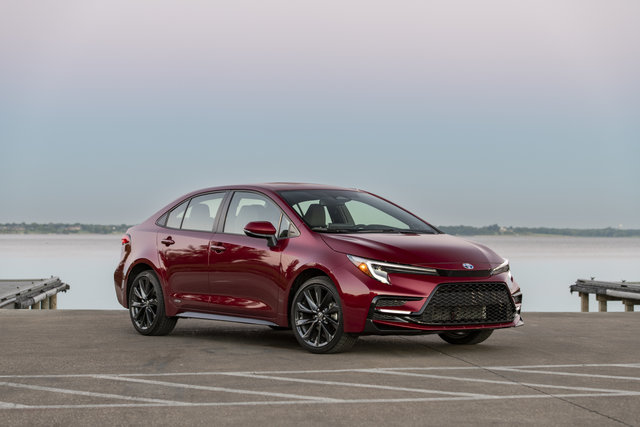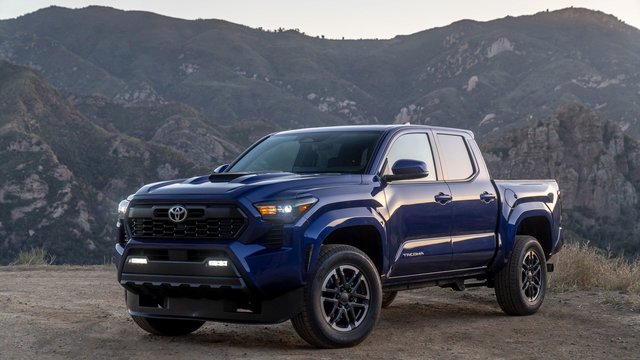If you're a homeowner in Mississauga tackling weekend renovations, you need a truck that can haul...

Summer road trips can create memories that last a lifetime—or they can leave you stranded on the side of Highway 400 with a vehicle problem that could have been prevented. Whether you're planning a cottage weekend in Muskoka or a family adventure to Niagara Falls, your Toyota needs proper preparation to handle the extra demands of highway travel and extended driving.
A pre-trip inspection takes just 30 minutes but can save you hours of frustration and potentially dangerous situations. Our certified technicians at Erin Park Toyota have compiled this essential checklist based on the most common issues we see from vehicles returning from summer trips.
Engine Fluids: The Lifeblood of Your Toyota
Start your inspection under the hood. Engine oil, coolant, brake fluid, and windshield washer fluid all work harder during extended highway driving and hot weather conditions.
Engine Oil Check: Pull the dipstick when your engine is cool and on level ground. The oil level should sit between the minimum and maximum marks. Dark, thick oil or metal particles indicate it's time for a change before your trip. Fresh oil handles highway temperatures and sustained high RPMs much better than old oil.
Coolant System: Check the coolant level in the overflow tank when the engine is cool. The fluid should be clear green, pink, or blue—never brown or rusty. Look for white residue around the radiator cap or visible leaks under the vehicle. Ontario's summer heat puts extra stress on your cooling system.
Brake Fluid: Locate the brake fluid reservoir (usually near the back of the engine bay) and verify the fluid level reaches the "full" line. Brake fluid should appear clear or light amber. Dark or contaminated brake fluid reduces braking performance, especially during mountain driving or heavy traffic.
Tire Safety: Your Connection to the Road
Tires bear the full weight of your loaded vehicle plus the stress of highway speeds and hot pavement temperatures. A tire failure away from home creates both safety and convenience problems.
Use a tire pressure gauge to check all four tires plus your spare when they're cold (before driving). Your Toyota's recommended tire pressure is printed on a sticker inside the driver's door frame. Summer heat can increase tire pressure by 4-6 PSI, while underinflated tires generate dangerous heat buildup at highway speeds.
Inspect the tread depth using the toonie test: insert a $2 coin into the tread groove. If you can see the bear's paws, your tires need replacement before your trip. Also examine the sidewalls for cracks, bulges, or embedded objects.
Battery and Electrical System
Hot weather and air conditioning use put extra demands on your battery and charging system. Clean any corrosion from battery terminals using baking soda and water. White or blue-green buildup around terminals reduces electrical connectivity and can leave you stranded.
Test your lights with a helper: headlights, taillights, brake lights, turn signals, and hazard flashers. Replace any burned-out bulbs before departing. Check that your phone charger works with all USB ports, especially if you rely on GPS navigation.
Air Conditioning Performance
Nothing ruins a road trip faster than a failed air conditioning system during a Canadian heat wave. Turn on your A/C and verify it produces cold air within two minutes. Weak airflow often indicates a clogged cabin air filter that restricts air movement.
Listen for unusual noises when the compressor engages—grinding or squealing sounds suggest belt or bearing problems that could fail during your trip. If your A/C doesn't cool properly, refrigerant levels may be low due to small leaks in the system.
Windshield and Wiper System

Summer storms can appear quickly, making functional wipers essential for safe driving. Run your wipers through a complete cycle and listen for grinding noises or observe skipping patterns that indicate worn blades.
Fill your washer fluid reservoir completely with summer-grade fluid that removes bugs and road grime effectively. Keep an extra bottle in your cargo area for longer trips—you'll use more washer fluid on highway drives than around town.
Check your windshield for chips or cracks that could spread due to temperature changes or road vibrations. Small chips can often be repaired, but cracks require windshield replacement for safe driving.
Emergency Kit Essentials
Pack an emergency kit appropriate for your destination and route. Include jumper cables, tire sealant, basic tools, first aid supplies, water, and non-perishable snacks. Add extra items for remote areas: flashlight, warm clothing, and emergency blankets.
For technology, pack car chargers for all devices, paper maps as GPS backup, and emergency contact numbers written down. Download offline maps for areas with poor cell coverage.
Professional Inspection Benefits
While this checklist covers basic safety items, a professional pre-trip inspection provides comprehensive peace of mind. Our certified technicians use specialized tools to test systems that aren't easily checked at home.
A professional inspection includes:
- Computerized battery and charging system test
- Brake system pressure testing and rotor measurement
- Suspension component inspection for wear or damage
- Air conditioning system performance analysis
- Timing belt and drive belt condition assessment
- Exhaust system safety inspection
When to Schedule Service
Book your pre-trip inspection at least one week before departure. This allows time to complete any necessary repairs or order parts without rushing. Last-minute discoveries can delay your trip or force you to travel with known problems.
Schedule service earlier if your Toyota is approaching maintenance intervals. Combining pre-trip inspection with regular service saves time and ensures everything is fresh for your adventure.
Regional Considerations for Ontario Travel
Different destinations present unique challenges for your vehicle. Cottage country roads are dusty and rough, requiring attention to air filter condition and suspension components. Mountain driving demands properly functioning brakes and cooling systems.
For trips to the United States, verify your spare tire is properly inflated and your roadside assistance coverage includes cross-border service. Carry copies of your vehicle registration and insurance in case of border questions.
Make Your Trip Memorable for the Right Reasons
Taking 30 minutes to inspect your Toyota before a road trip can prevent hours of roadside delays and expensive emergency repairs. Your vehicle works hard to get you safely to your destination and back home—give it the attention it deserves.
Visit Erin Park Toyota for a thorough pre-trip inspection that examines all critical systems with professional-grade equipment. Our service team knows exactly what to check for Ontario driving conditions and can complete most repairs the same day to keep your travel plans on track.
Other Articles That May Interest You
Finding the right family vehicle for Mississauga means balancing space, convenience, and everyday...
If you're searching for a hot hatch that's equally ready for winter commutes and track-day fun,...






